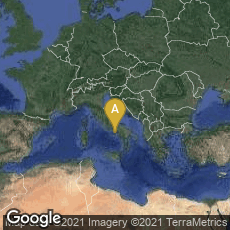

The eruption of Mt. Vesuvius over two days in 79 CE buried the cities of Herculaneum and Pompeii in lava, destroying life, but preserving buildings in a remarkable way.
From the ruins of Pompeii over 11,000 inscriptions have been recorded—of many different kinds—carved, painted or scratched into walls, formal, humorous, erotic, and scatological. They reflect wide use of writing and comparatively wide availability of literacy in Roman society.
"Some of them [the inscriptions] are very grand and formal, like the dedications of public buildings and the funerary epitaphs, similar to others found all over the Roman world. Inscriptions such as these are not necessarily good evidence of widespread literacy. The enormous numbers that were produced in Roman times could reflect a fashion for this particular medium of display, rather than a dramatic spread of the ability to read and write.
"Other Pompeian inscriptions are perhaps more telling, because they display a desire to cummunicate in a less formal and more ephemeral way with fellow citizens. Walls on the main streets of Pompeii are often decorated with painted messages, whose regular script and layout reveal the work of professional sign-writers. Some are advertisements for events such as games in the amphitheatre; others are endoresements of candiates for civic office, by individuals and groups within the city. . . .
"Graffiti offer even more striking evidence of the spread and use of writing in Pompeian society. These are found all over the city, scratched into stone or plaster by townspeople with time on their hands and a message to convey to future idlers. . . .
"Even though we cannot estimate the proportion of Pompeians who were literate (was it 30 per cent, or more, or perhaps on 10 per cent ?) we can say with confidence that writing was an essential, and a day-to-day part of the city's life" (Ward-Perkins, The Fall of Rome and the End of Civilization [2005] 153-54, & 155-57).
Because graffiti such as those preserved in Pompeii were intended to be widely shared some have called these evidence of early social media.